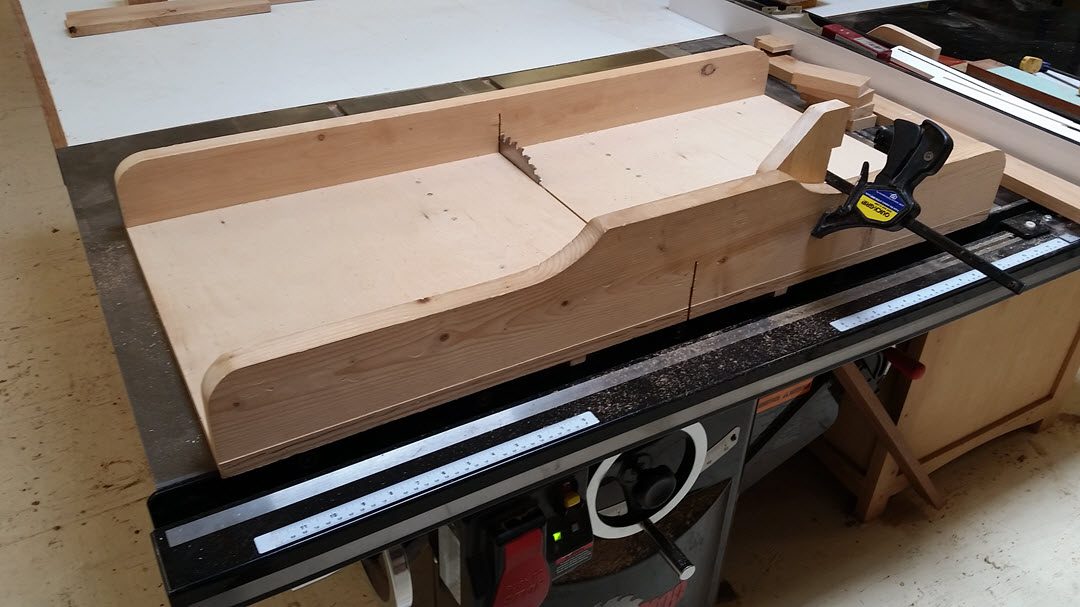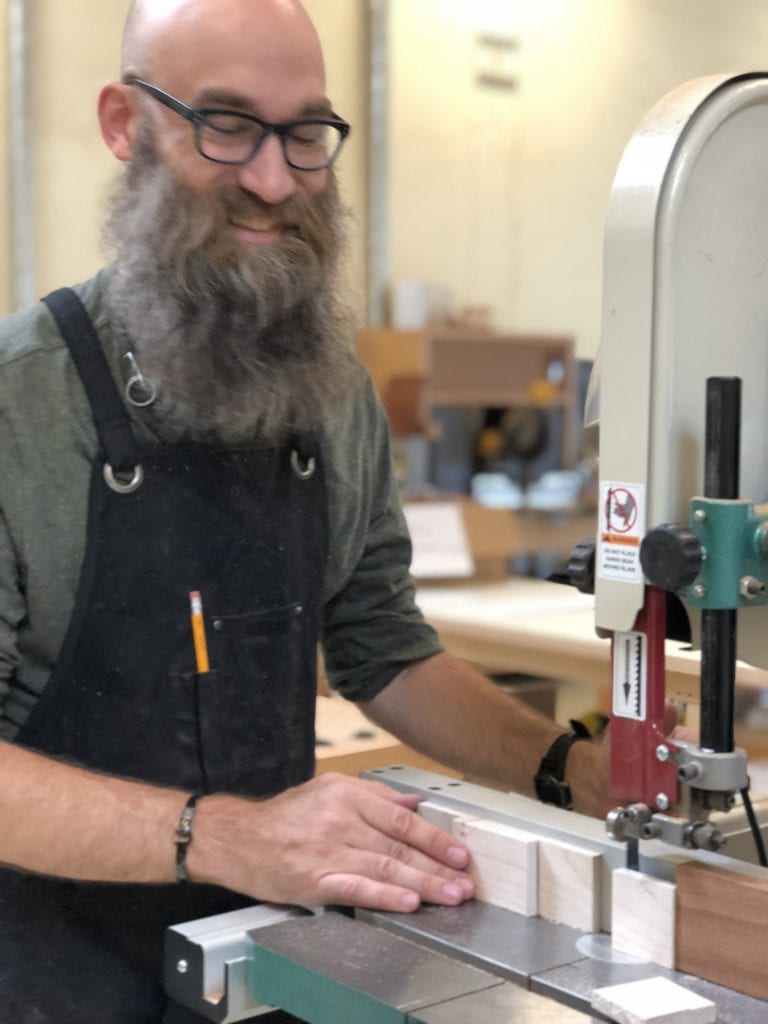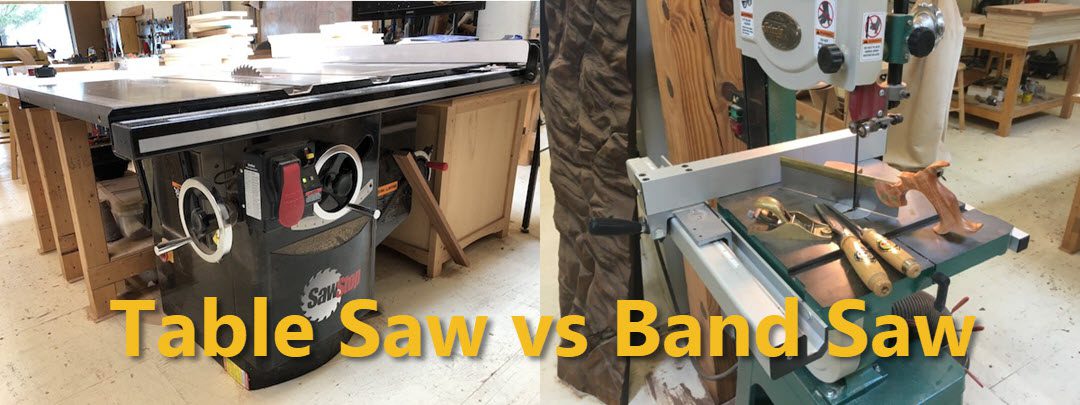Choosing Woodworking Tools
Table Saw vs. Band Saw
Woodworking tools are what I’ve spent my life using. Woodworking and teaching woodworking classes has been my life’s work, and I’ve always worked under the assumption that every woodworking shop should have a table saw.
But lately, I’ve been rethinking that strategy. There are those that would argue that a band saw should be the number-one tool. If you’re setting up shop for the first time or downsizing to a smaller shop, or if you’re a long-established table saw user, could a band saw be the better tool?
If you only had space for either a table saw or a band saw, which would it be?
Stranded on a desert island, which tool would you rather have to feed your woodworking habit as you debate whether or not you’re going to attempt to leave the island?
The Beginning Woodworking Class here at the Florida School of Woodwork helps you get familiar with the table saw and band saw. You’ll learn to use these tools safely and become acquainted with their strengths and limitations.
Let’s take a look at a few features of each.
Why Choose A Table Saw

The table saw is the traditional woodworking tools of choice in a shop, and for good reason.
It evolved from the large circular saws used by mills for cutting wood into planks. It’s thought that Tabitha Babbit, a Shaker woman, invented the circular saw blade after watching two men use a two-man whipsaw and realizing how inefficient their labor was.
A table saw, by design, excels at making straight cuts. This is why it’s foundational in most cabinet and furniture shops. When building cabinets, the majority of cuts are straight, whether cutting plywood to size or ripping hardwood to width. It’s also why it’s a big part of every Beginning Woodworking Class .
When using the rip fence at the table saw, the edge of the work piece riding up against the fence must be straight. Otherwise, the work piece can rotate as it’s going through the blade. Likewise, when using a miter gauge to guide the work piece for a crosscut operation. The edge against the face of the miter gauge should be straight.
The blade of the table saw spins toward the operator. The cutting action takes place at the front of the blade as the teeth of the blade spin downwards. This, of course, means that the rear of the blade is spinning in an upward direction out of the saw’s table.
And that’s one of the problems with a table saw. It CAN be one of the less safe woodworking tools.
This upward/forward spinning action of the blade can grab a workpiece and send it flying. This is commonly called kickback and can cause injury. That’s why it’s important to always stand to the side of the workpiece as you’re feeding it into the blade.
There are a number of safety features built into newer table saws that help mitigate the occurrence of kickback. These include splitters, riving knives, anti-kickback pawls, and blade covers. So it’s important to read the manual and use the equipment as it was designed, making sure everything is set up and tuned properly.
Why Choose A Band Saw

By contrast, let’s take a look at the band saw. Right out of the gate you notice a completely different design than the table saw.
Instead of the solid, circular plate of steel with carbide teeth on a table saw, the blade of the band saw is exactly that—a narrow, flexible band of steel with teeth formed along one edge. The band saw blade is stretched and driven between two or three wheels.
As the wheels turn, the cutting action of the band saw blade is downwards, toward the table.
I would be willing to bet that most woodworkers reserve the band saw for cutting curves and odd shapes. And the band saw’s design using a narrow blade makes it ideal for those operations.
But there’s another benefit to this design. Since the blade is so narrow and it cuts downward, it has the advantage of essentially keeping the workpiece solidly on the table as you make the cut. This makes the bandsaw inherently safer than a table saw for most cuts.
And at the risk of repeating myself, we absolutely cover the band saw in the Beginning Woodworking Class
Making a rip cut on the band saw is a breeze, with the right blade. You don’t need a square reference edge to start with. All you need is a straight line to use as a guide when feeding the workpiece into the blade. A pass across the jointer or a few strokes with a hand plane quickly removes the saw marks.
Cutting tapers on the band saw (such as for tapered legs) is also an easy task. Just draw guidelines, cut just outside the lines, then follow up with a few strokes of a hand plane to get a perfectly smooth tapered surface. It’s easier than you think.
Yes, the narrow blade of the band saw makes it a perfect tool for cutting curves. But the band saw has one other trick up its sleeve: Resawing (<—click to see Michael Fortune’s video on Resawing). To resaw lumber is to cut thinner planks or veneer from a thicker board. It’s a great way to get the most out of expensive hardwoods.
When you talk with furniture designers like Kelly Parker and Michael Fortune, they’ll tell you that the band saw should be a part of every woodworkers tool arsenal.
Conclusion
The choice of whether you need a table saw or band saw depends on a few factors. Of course, if you have the floor space in your shop and the budget, you can have both! Your work involves free-form curves or shapes or if space is limited, you can’t go wrong with a band saw. The table saw is great to have when most of your work involves cutting plywood to size and your projects are primarily “square work” such as cabinetry and bookshelves.
Before you make a purchase, giving some thought to the advantages and disadvantages of these woodworking tools will be time well spent.

